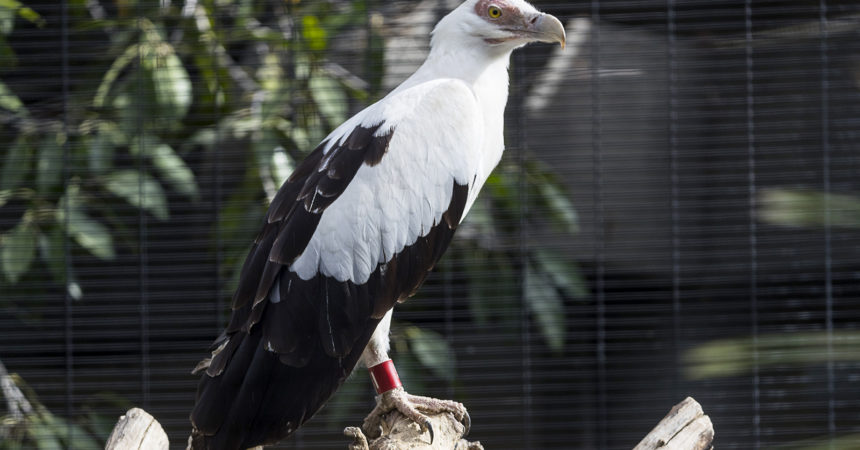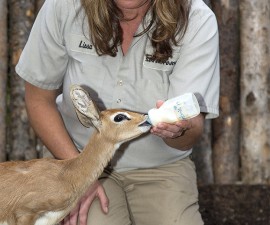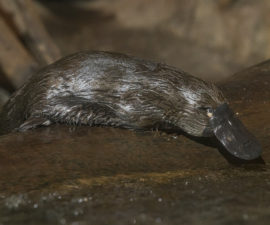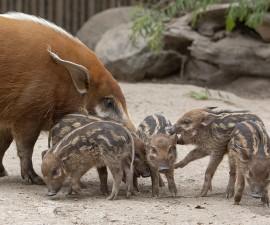The palm-nut vulture Gypohierax angolensis is an Old World Vulture of monotypic genus, apparently an intermediate between fish-eagles and vultures, that resides from Senegal east to Kenya and to South Africa. They are not a very large bird —standing approximately two feet tall, weighing up to four pounds, with a wingspan of five feet. Unlike other vultures, palm-nut vultures have completely feathered heads. Their primarily vegetarian diet provides the carotenoid pigments that brightly color the unfeathered orange skin around their yellow eyes. The plumage is black and white. Vocalizations consist of a low growl during feeding, a duck-like quack at the roost, and hissing sounds during courtship—nothing like the more recognizable sounds of other members of the same family (hawks, eagles and falcons). They live near lakes, rivers, estuaries, and seashores where oil palms are abundant.
When we think of a vulture, we envision a huge group of birds covered in blood, tearing apart carcasses on the savannas of Africa. Palm-nut vultures do nothing of the sort, about 70 percent of the adult diet consists primarily of raffia Raphia sp. palm nut fruits, oil palm husks, and wild dates. For the other 30 percent, they consume live fish, crabs, invertebrates, small mammals, birds, and reptiles; they rarely eat carrion like their cousins.
Pairs form bonds that are very strong, and prior to breeding they perform acrobatic displays. Both the male and female gather material and build a huge, deep nest out of sticks that is then lined with palm fronds and leaves. After breeding, the female lays one egg, and both birds share in the incubation for about 50 days.
Palm-nut vultures are rarely persecuted due to their primarily vegetarian diet. Although they are not rated as Threatened or Endangered by the IUCN at this time, they are still at risk due to the habitat loss of the naturally occurring oil palms—they are not particularly fond of palm plantations.
Here at the San Diego Zoo Safari Park, we are very fortunate to have the opportunity to work with this unique species. In 2000, the Safari Park had the opportunity to welcome palm-nut vultures into North America. Nine birds were brought to the US and disseminated to four zoos. In December 2017, the Safari Park acquired a pair to live in the aviary near the Mombasa Lagoon. After establishing their pair bond throughout the year, in December 2018, they started showing interest in collecting material to build a nest. Because their nests are usually built in the tops of oil palms, the keeper staff simulated the ideal conditions by installing a metal rack and attaching palm fruit bunches and fronds and filling the nest with other material to get them started. After many months of nest-building—and many mating events—on March 4, 2019, an egg was laid!
Both the male and female shared the incubation responsibilities for the approximately 50-day incubation period. On April 22, 2019, we found a hatched egg on the ground, but because the nest is so high and so deep, we spent many hours over many days trying to confirm a chick actually hatched. We were watching the parents do what appeared to be feeding for about three weeks.
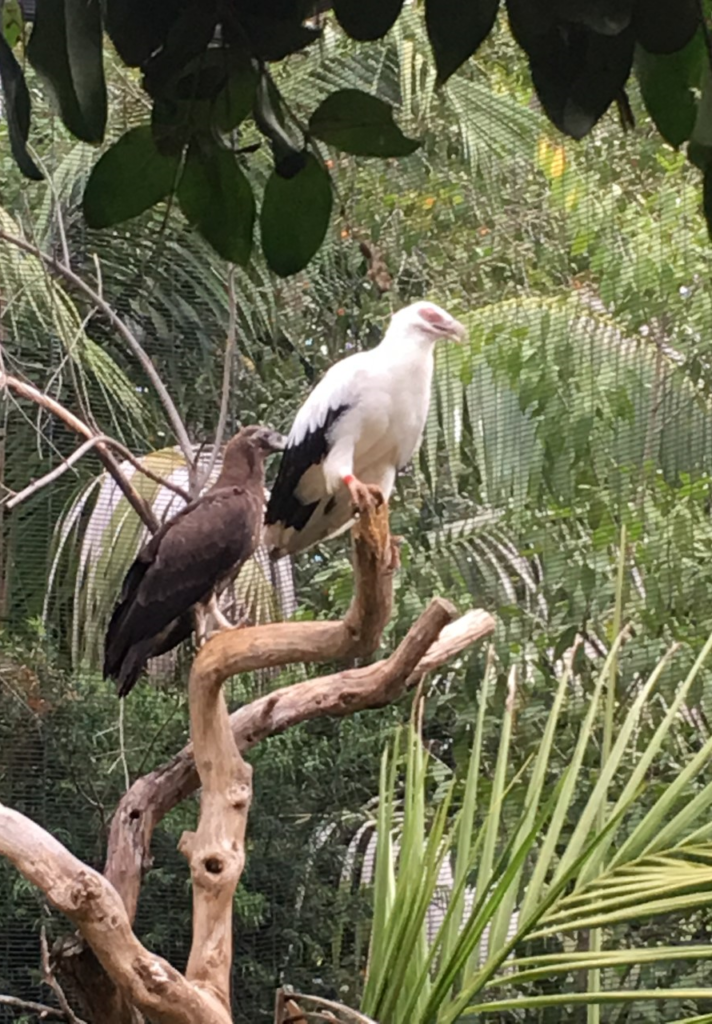
On May 13, 2019, we were able to confirm a chick in the nest! A keeper perched high on Mombasa Lagoon Bridge peering through binoculars saw a little, dark brown head pop up and get food from the female. This is the first palm-nut vulture hatch in the 103-year history of San Diego Zoo Global. We were able to collect some blood vessels from the membranes of the empty eggshell under the nest and submitted them to our genetics lab to determine the sex of the chick…it is a male. During our International Vulture Awareness Day celebration (August 31–September 2) come visit our new family, including the recently fledged chick, in the aviary. It’s in Nairobi Village, between the Animal Care Center and Mombasa Village Lagoon.
Michelle Handrus is a senior keeper at the San Diego Zoo Safari Park. Read her previous blog, Vulture Worlds.

